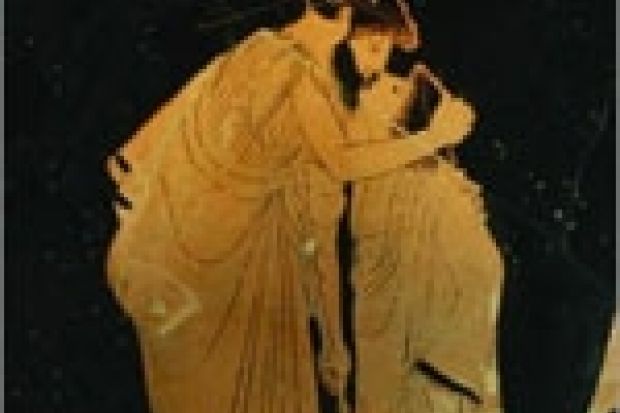Boys will be boys" is a depressing prediction not only for feminists with an eye to the future, but also - retrospectively - for historians of sexuality. If it were true that the crasser forms of masculine strutting were inevitable, many historical investigations into cultural difference or the social construction of human behaviour would be condemned to conclude with no more than the tedious repetition of stereotypes.
But fortunately for historians, Ancient Greek pederasty is always there to throw a spanner in the machine of the ideologues who believe that human sexuality has a natural and ineluctably proper form. Modern academics may argue fiercely whether Greek pederasty is committed to pursuit and penetration, or whether it finds space rather for hugging and sweetness (as the Victorians would put it). But however sweet or harsh the description, pretty well everyone over the past 1,500 years has found the expression of male desire in classical Athens distinctly odd. It is still a shock to see a politician stand up in court, as Aeschines does in the fourth century BC, and cheerfully admit to being an avid lover of boys. Greek pederasty is argued over so intently because it poses so sharply the question of the nature of male desire in society. An ancient Athenian gym is one place where a modern boy would find his modern boyishness the least self-evident of performances.
The varied images of male lovers depicted on Greek pots offer an important body of evidence for understanding ancient pederasty. This material was set centre stage by Kenneth Dover's influential book Greek Homosexuality, which selected some particularly vivid pictures to make his case. Andrew Lear correctly notes that there has been no systematic collection of Athenian erotic imagery, and the primary aim of this book is to provide such a resource. It has the fullest account currently available of the repertoire of pederastic imagery, from courtship scenes, through idealised or squalid consummations, to the pursuit of boys by rapacious divinities.
Lear, a Classicist, writes all the chapters. The introduction and conclusion are co-written with the Italian legal scholar and historian of sexuality Eva Cantarella. This is primarily an iconographic study, and there is surprisingly little engagement with the current historiographical debate - Foucault, Davidson, Halperin and their pals scarcely get a look-in. In general, Lear's conclusions from the artistic evidence correspond to a standard picture developed from the written sources: elaborate courtship of young males by older bearded men; intercrural sex (where the penis is inserted between the thighs); and a strong contrast between idealised male desire and more brutish forms of pursuit and enactment. In the interests of comprehensiveness, there are few extended readings of particular images, and at times this leads to a lack of sophistication about the relation between imagery, idealisation and social norms.
In particular, not enough space is allowed for the playfulness, humour and transgressions of sexuality. The delightful image of a naked young sculptor working on the statue of a bearded Herm with a large erection, which the boy holds between his thighs, is not just an image of an artisan at work, but a playful and sexy image which makes sense within a specific erotic milieu. It is a pity that such images are not discussed in Lear's account: they are essential to a fully nuanced picture of the erotic. But this volume will be a much-used starting point for students and scholars of Greek male sexuality.
Images of Ancient Greek Pederasty: Boys Were Their Gods
By Andrew Lear and Eva Cantarella
Routledge
288pp
£65.00
ISBN 9780415223676
Published 2 May 2008
Register to continue
Why register?
- Registration is free and only takes a moment
- Once registered, you can read 3 articles a month
- Sign up for our newsletter
Subscribe
Or subscribe for unlimited access to:
- Unlimited access to news, views, insights & reviews
- Digital editions
- Digital access to THE’s university and college rankings analysis
Already registered or a current subscriber?




